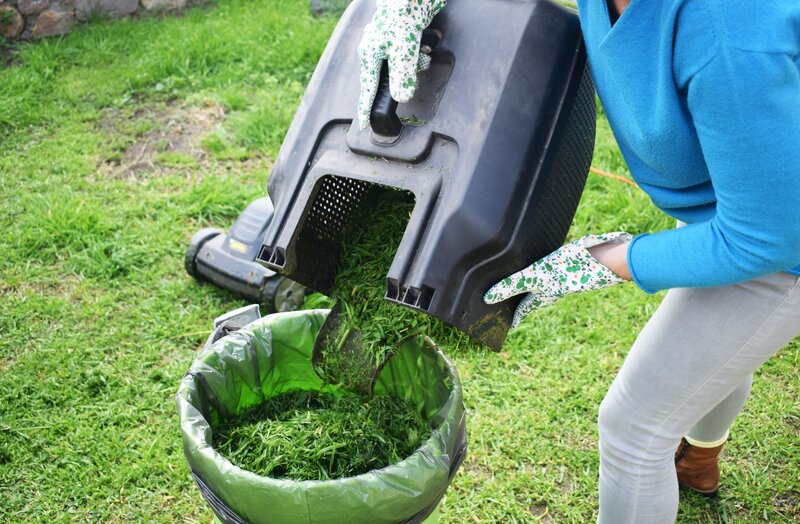Composting has become increasingly popular among eco-conscious households seeking to reduce their carbon footprint and contribute to a greener planet. Creating a sustainable and organic fertilization source, composting involves the decomposition of biodegradable waste into nutrient-rich soil, ideal for gardening and landscaping. Plastno's compostable bags play an integral role in this sustainable process, providing a reliable and environmentally friendly option made from non-GMO, renewable plant-based materials. These bags break down safely in composters and landfills, making them an excellent addition to any composting routine.
In this comprehensive guide, we will delve into the essentials of composting and provide practical tips to compost properly using Plastno's compostable bags. From understanding the fundamentals of the composting process to identifying the appropriate waste materials and maintaining the right composting conditions, we will equip you with the knowledge and tools needed to master the art of composting.
Whether you're an experienced gardener or a beginner looking to adopt sustainable practices, this Composting 101 guide will help you turn your household waste into valuable, nutrient-rich soil and nurture a thriving, eco-friendly garden. So, let's embark on this journey and discover how Plastno's compostable bags can help you embrace the world of composting, one step at a time.
The Science Behind Composting
Composting is a natural process that occurs when organic matter, such as food scraps and yard waste, decomposes over time due to the action of microorganisms, insects, and other decomposers. This process transforms the waste into a rich, dark, and nutrient-packed substance called humus, which is highly beneficial for plant growth and soil health. Composting can be done in various ways, including using dedicated compost bins, tumblers, or simply creating a compost pile in your backyard.
Key Components for Successful Composting
For successful composting, you need to ensure the right balance of several elements:
- Carbon-rich materials (browns): Materials like dried leaves, straws, and wood chips provide the necessary carbon that decomposers need for energy and growth. Carbon also helps neutralize the acidity created by nitrogen-rich waste.
- Nitrogen-rich materials (greens): Components like food scraps, grass clippings, and coffee grounds offer nitrogen essential for microorganism growth and reproduction. Nitrogen helps generate heat, speeding up the decomposition process.
- Oxygen: An adequate oxygen supply supports aerobic decomposition, which is more efficient and faster than anaerobic decomposition. Turning or aerating the compost pile ensures proper oxygen circulation, promoting faster decomposition and reducing foul odors.
- Moisture: Maintaining the right moisture level in your compost pile is crucial for decomposition, as moisture helps microorganisms digest the organic material. A compost pile should resemble a damp sponge—not too wet, but not too dry either. Regularly adjust moisture levels by adding water or dry materials as needed.
Steps to Create and Maintain a Compost Pile
Follow these simple steps to set up and maintain your household compost pile:
- Choose the Right Location: Find a level, well-draining area in your backyard with partial shade to maintain a consistent temperature conducive to decomposition.
- Start with Browns: Lay a layer of carbon-rich materials on the ground to create a solid foundation for your compost pile.
- Alternate Layers: Add alternating layers of greens (nitrogen-rich materials) and browns (carbon-rich materials), striving for a 3:1 or 2:1 ratio of browns to greens. This helps balance the carbon and nitrogen levels, accelerating the decomposition process.
- Use a Compostable Bag: Store kitchen scraps in Plastno's compostable bags before adding them to your pile. These bags will break down alongside the organic materials, streamlining your composting process and reducing plastic waste.
- Turn the Pile: Regularly turn or mix your compost pile using a pitchfork or shovel to circulate oxygen and ensure even decomposition. Aim to turn the pile every one to two weeks.
- Monitor Moisture and Temperature: Check and adjust the moisture levels, keeping the pile damp like a sponge. Observe the pile's internal temperature, which should range between 130-160°F, to foster optimal decomposition.
Dos and Don'ts of Composting
Keep these tips in mind to maximize the effectiveness and safety of your composting:
Do:
- Cut or shred larger materials into smaller pieces to speed up decomposition.
- Add a compost activator or accelerator, like aged compost or store-bought inoculants, to stimulate microbial activity.
- Cover your compost pile with a tarp or other breathable material to maintain moisture levels and protect it from rain or direct sunlight.
Don't:
- Add meat, dairy, or oily food waste, as these materials can attract pests and create foul odors.
- Include diseased plants, invasive weeds, or pesticide-treated materials, which can contaminate the finished compost.
- Overload the compost pile with one material type—maintain a balanced mix of greens and browns for optimal results.
Signs Your Compost is Ready to Use
Your compost will typically be ready to use in 3-6 months, though the time can vary depending on the materials, environment, and maintenance. Here are a few indicators that your compost is finished and ready to be used in your garden:
- Color and Texture: Finished compost should be dark brown, crumbly, and earthy-smelling, without any distinguishable food scraps or other original materials.
- Temperature: The pile's temperature should be similar to the surrounding air temperature, indicating that decomposition has slowed.
- Volume Reduction: The compost pile will have significantly reduced in size, often by 50% or more, as the materials break down.
Once your compost is ready, you can fertilize your garden, enhance your soil's structure, or create potting mixes for your plants.
Embrace Composting with Plastno's Compostable Bags
Composting is a simple yet impactful way to convert household waste into a valuable resource for your garden and the environment. Learning and implementing proper composting techniques can minimize waste disposal and promote a more sustainable lifestyle. Plastno's eco-friendly compostable bags are an excellent addition to your composting routine, providing a responsible waste management option that aligns with your green living values.
Ready to start your composting journey and make a difference? Explore Plastno's range of eco-friendly compostable bags, specially designed to decompose alongside your organic waste materials. Transform your daily waste management practices and make a significant step towards a greener future. Discover Plastno's compostable garbage bags today, and join the movement to protect our planet, one compost pile at a time.






Share:
Compostable Bags vs. Biodegradable Bags: What's the Difference?
Compostable Trash Bags: A Sustainable Solution for Kitchen Waste